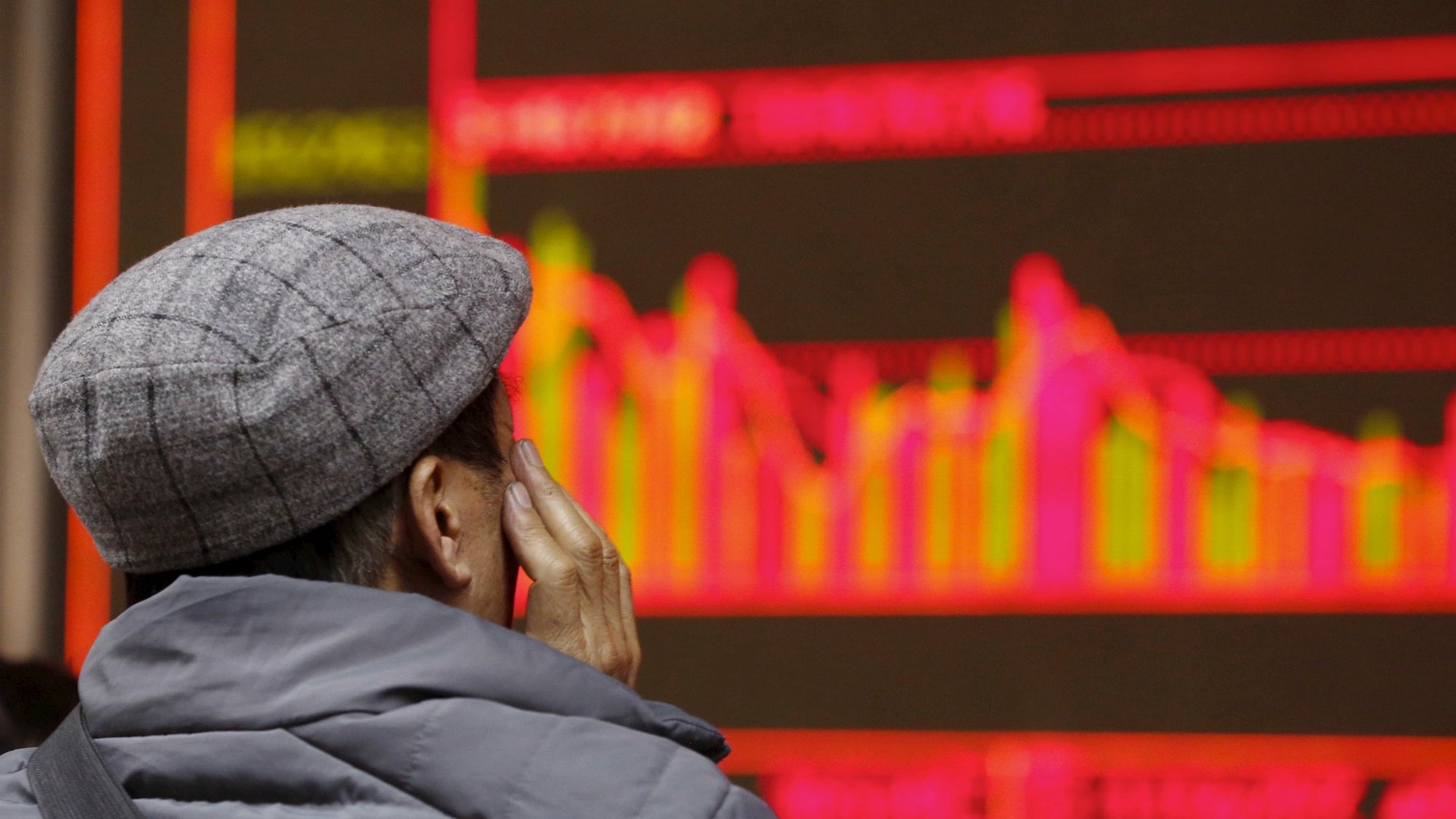Asian stock markets’ horrible start to 2016 is getting worse
After huge global losses last week to begin the New Year, stocks in the Asia-Pacific region fell sharply on Monday (Jan. 11), with plenty to suggest the second week of 2016 could be a shaky one. In China the blue-chip CSI 300 and Shanghai Composite fell more than 5%; the Hang Seng in Hong Kong dropped by more than 2.4%. India’s benchmark Sensex index fell by more than 300 points in morning trade at one point, marking a 52-week low.


After huge global losses last week to begin the New Year, stocks in the Asia-Pacific region fell sharply on Monday (Jan. 11), with plenty to suggest the second week of 2016 could be a shaky one. In China the blue-chip CSI 300 and Shanghai Composite fell more than 5%; the Hang Seng in Hong Kong dropped by more than 2.4%. India’s benchmark Sensex index fell by more than 300 points in morning trade at one point, marking a 52-week low.
In Australia the S&P/ASX 200 fell more than 2% to the lowest levels in two and a half years before recovering slightly. (In Japan trading was closed for a national holiday.)
Last week was rough, thanks largely to worries about the Chinese economy and falling yuan. A controversial new circuit breaker in China halted trading for the day twice and exacerbated panic selling in a rout that saw as much as much as 7.4 trillion yuan ($1.1 trillion) lost on the Shanghai and Shenzhen indices (paywall). Authorities scrapped the mechanism, which many experts believe was poorly designed, raising questions about the competence of authorities.
The Dow Jones Industrial Average lost 6.2% last week, its worst-ever five day start to a year (paywall), and the Stoxx Europe 600 suffered its largest one-week percentage fall (-6.7%) since 2011.
This week China remains a chief worry. ”The key risk is China, where fears of continued economic slide are causing capital outflows, exchange rate depreciation, asset market selloff, and policy dilemmas,” said Taimur Baig, chief economist for Asia at Deutsche Bank Research, forecast in a note on Friday (Jan. 8).
In Australia the resources sector—which coasted for years on strong demand from a now-faltering China—were hit particularly hard, with mining heavyweights BHP Billiton and Rio Tino both plunging over 4% in Sydney.